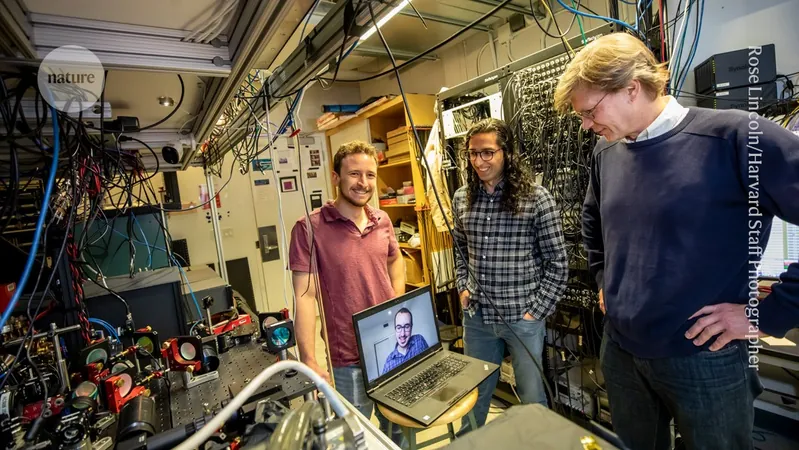
Revolutionary 'Atomic Conveyor Belt' Supercharges Quantum Computing
2025-09-19
Author: Ming
Unlocking the Future of Quantum Computing
Imagine a conveyor belt of atoms meticulously organized in perfect rows, surging forward to tackle one of quantum computing's biggest hurdles. This cutting-edge development could reshape the future of large-scale quantum computers.
A Game-Changing Study
In groundbreaking research published in *Nature*, physicists unveiled a remarkable system capable of continuously replenishing individual atoms suspended in a quantum array using innovative laser beams known as 'optical tweezers.' This technique has already led to the creation of some of the largest quantum computers to date, specifically through the emerging method of neutral-atom quantum computing.
Overcoming Atom Loss: A Major Breakthrough
One of the biggest challenges in this domain has been the loss of atoms during quantum calculations. Chao-Yang Lu, a prominent quantum physicist at the University of Science and Technology of China, hailed this advancement as an 'impressive engineering achievement' that is set to pave the way for more robust atom-based computing.
The Race for Quantum Supremacy
While tech giants like Google and IBM have primarily focused on trapped ions and superconducting circuits, the neutral-atom technique has emerged as a fierce competitor in the quest for functional quantum computers, amassing significant investments.
The Ingenious Setup of Rubidium Atoms
Led by Mikhail Lukin of Harvard University, the research team constructed a sophisticated two-dimensional array containing over 3,000 rubidium atoms, meticulously spaced just 9 micrometers apart within a high-vacuum chamber. Below this array, they maintained a reservoir of rubidium gas to continuously feed their atomic needs.
The Future of Quantum Interaction
Employing the same optical tweezers, the team extracted more atoms from the reservoir to create a secondary array in a designated 'preparation zone.' They ingeniously positioned this new array so that its atoms could interact directly with those of the first array, allowing for enhanced quantum interactions before discarding the original array. This method not only promises increased efficiency but also opens doors to new levels of quantum processing power.



 Brasil (PT)
Brasil (PT)
 Canada (EN)
Canada (EN)
 Chile (ES)
Chile (ES)
 Česko (CS)
Česko (CS)
 대한민국 (KO)
대한민국 (KO)
 España (ES)
España (ES)
 France (FR)
France (FR)
 Hong Kong (EN)
Hong Kong (EN)
 Italia (IT)
Italia (IT)
 日本 (JA)
日本 (JA)
 Magyarország (HU)
Magyarország (HU)
 Norge (NO)
Norge (NO)
 Polska (PL)
Polska (PL)
 Schweiz (DE)
Schweiz (DE)
 Singapore (EN)
Singapore (EN)
 Sverige (SV)
Sverige (SV)
 Suomi (FI)
Suomi (FI)
 Türkiye (TR)
Türkiye (TR)
 الإمارات العربية المتحدة (AR)
الإمارات العربية المتحدة (AR)